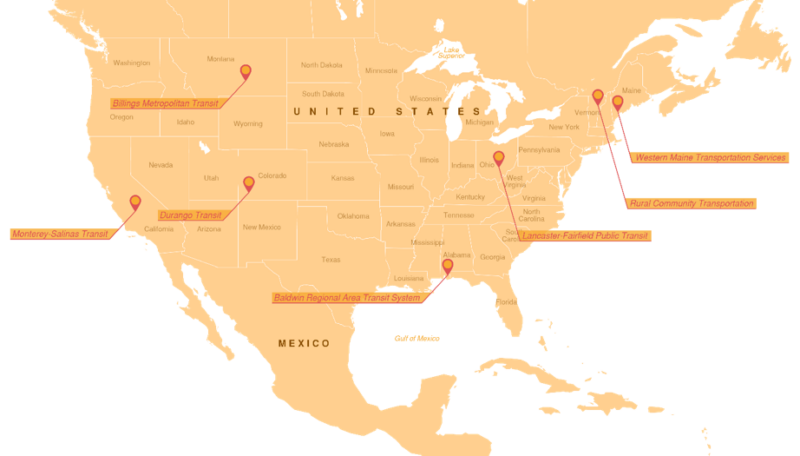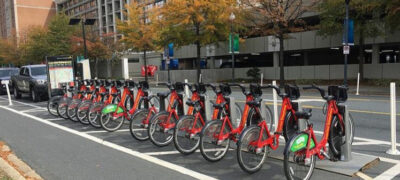New Fare Payment Systems and Payment Technology Case Studies
- Date: November 8, 2022
Jump to section
Interviews were conducted with seven small urban and rural transit agencies who have deployed either innovative fare technology or utilized a specific fare policy to provide convenience to riders. Additional interviews were held with technology vendors to understand the available technology in preparation for the case study interviews. An interview guide was created to direct the discussion for all case studies consistently across agencies. However, some questions may vary depending on the technology or policies deployed by the transit agency. The complete interview guide and case study notes can be found in the appendix.
Case studies focused on the following elements:
- Understanding the goals and motivations behind pursuing the fare technology
- Timeline from concept to procurement to final deployment
- Benefits or challenges experienced due to adoption of the technology
- Unforeseen issues that arise during the implementation process
- Public outreach and use of technology by riders
- Approach to data collection and management
- Capital and operating costs, including any required fleet modifications
The national transit database information has been provided for each transit agency participating in the case study interviews. The ridership, vehicle revenue miles (VRM), vehicle revenue hours (VRH), vehicles operated in maximum service (VOMS), and operating funds expended have been defined. For VOMS, both the number of buses and demand response (DR) total have been provided for reference. Besides BRATS, all other agencies exclusively use the fare technology on fixed-route service; however, some transit agencies are exploring integrating the technology for demand response in the future.
| Agency | Fare Tech or Service | Ridership | VRM | VRH | VOMS | Operating $ Expended |
| BRATS | Cashless | 133,765 | 446,470 | 25,694 | 52 DR | $1,281,625 |
| MET Transit | FPaaS & Smart Card | 470,975 | 747,217 | 53,749 | 18 bus and 12 DR | $5,269,489 |
| Durango Transit | Mobile Ticketing & ABT | 373,845 | 341,145 | 24,764 | 10 bus and 2 DR | $1,869,115 |
| Lancaster-Fairfield Transit | Open Payment & ABT | 129,764 | 533,513 | 35,336 | 5 bus and 14 DR | $1,804,321 |
| MST | Open Payment & Smart Card | 4,428,381 | 5,976,448 | 371,548 | 120 bus and 48 DR | $46,834,189 |
| RCT | Fare-Free | 264,752 | 4,046,097 | 151,056 | 4 bus and 97 DR | $4,982,305 |
| WMTS | Smart Card Open Payment Standards-Based | 948,559 | 527,596 | 45,880 | 21 bus and 17 DR | $4,157,939 |
BRATS

The Baldwin Regional Area Transit System (BRATS) is a demand response only system that, in September 2020, went cashless in partnership with Via. Via allowed BRATS to improve rural service, increase hours of service, and improve the customer experience by reducing long bus rides with multiple connections. BRATS launched Via and saw a decrease in no-shows, reduced operator/passenger confrontation, and improved driver efficiency. The deployment of Via was not without its challenges, including ensuring that all passengers, especially those who are unbanked, could access and pay for the service. In hindsight, BRATS would prefer to have started with a pilot to identify potential challenges and solve issues before going system-wide.
- Fare Technology & Vendor: Mobile payments, cashless system; Via.
- Motivations to Switch to Fare Technology: BRATS wanted to offer a cashless system to reduce interactions between passengers and the drivers. This was fueled by health considerations motivated by the COVID-19 pandemic.
- Timing of Implementation: The procurement process started in the spring/summer of 2019 with a focus on reducing cash handling to save staff time. Previously, BRATS relied on Uber RouteMatch to schedule trips, but it wasn’t meeting their needs. Once Via was selected, the process took approximately three months to onboard Via and an additional 3-4 months to launch the service.
- Rural, Small Urban, and Tribal Considerations: Review the contract lengths with vendors. Currently, BRATS is on a year-to-year contract with Via, which provides operational flexibility but makes it challenging to consider switching providers if demand response riders become too comfortable using only the Via-powered technology. Additionally, consider a pilot project before a single system-wide launch to address unforeseen issues. In the case of BRATS, these considerations included the magnitude of the unbanked community, which involved conducting additional community training to purchase gift cards at local retailers and leaving the pay-in-advance option open; the operational learning curve associated with moving from paper to digital manifests and strength of cellular service across the service area; and the time for the community to adapt to cashless payments, which was actually eased due to the widespread use of cashless payments for public health purposes across industries during the pandemic.
| Technology | Element Available | Notes |
| Branding | No | This feature is unavailable. |
| Open Payment | No | This feature is unavailable. |
| Account-Based System (ABT) | Yes | The Via platform is ABT, and each user has access to their own account to pay fares. BRATS can manage the account from the back-end administration system. |
| Fare Capping | No | This feature is unavailable. |
| Purchasing Passes | N/A | This feature is unavailable. |
| Multiple Tickets | No | This feature is unavailable. |
| Retail Partnerships | No | This feature is unavailable. |
| Trip Planning | Yes | The Via application requires trip planning, including entering a specific location and destination to set departure times. |
| Cloud-Based | Yes | The Via platform is a cloud-based solution. |
| Smart Card Integration | No | This feature is unavailable. |
| Transit Rewards | No | This feature is unavailable. |
| Customer Service for Fare Technology | Yes | Via provides customer service through the mobile application. |
MET Transit
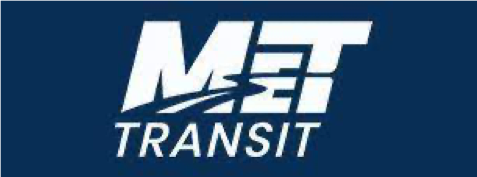
In August 2020, the City of Billings Metropolitan Transit System (MET Transit) procured TouchPass (a Delerrok product) as a mobile fare and smart card vendor. Shortly after TouchPass was bought out by Cubic Transportation Systems. Systems that have deployed TouchPass are now in the process of transitioning to UMO, Cubic’s mobility solutions platform. MET Transit is transitioning its TouchPass system to UMO and will continue to offer the TouchPass smart card. Both payment methods can only be used on fixed route and allow for stored value, and both the UMO Mobility App and smart card allow passengers the ability to purchase passes and 10-ride tickets Bundles.
- Fare Technology & Vendor: Fare Payment as a Service (FPaaS) with smart card; UMO.
- Motivations to Switch to Fare Technology: MET Transit has been looking at installing a digital fare system for years. However, the COVID-19 pandemic served as a catalyst to implement the fare system in order to reduce contact between drivers and passengers and to improve convenience for passengers.
- Timing of Implementation: Between RFP development and deployment, MET Transit spent approximately 11 months to integrate the new technology. The agency initiated conversations with vendors, gathered price quotes, identified agency needs for fare technology, and crafted the RFP accordingly.
- Rural, Small Urban, and Tribal Considerations: Rural agencies considering transitioning to a fare technology similar to UMO should consider what their goals for a fare technology are and take time to complete the necessary research prior to issuing the RFP to understand the options available and identify any potential limitations such as an increased need for personnel for customer service support and/or maintenance needs. Develop the RFP intentionally by incorporating specific requirements for vendors that align with agency needs.
| Technology | Element Available | Notes |
| Branding | No | The UMO Mobility app is not white-labeled to the transit agency, rather a rider downloads the UMO app and then searches for and selects the system in a list of transit providers. |
| Open Payment | No | The current system does not allow users to utilize open-payment cards. Riders must utilize the smart card or mobile app. |
| Account-Based System (ABT) | Yes | Each rider who uses the TouchPass/UMO technology is assigned their own account to manage and purchase fares. |
| Fare Capping | Yes | Passengers who use either the UMO Mobility app or a smart card may choose to use the “Stored Value” option to pay single-ride fares; stored value transactions allow for fare capping. |
| Purchasing Passes | Yes | Buying one of the various unlimited ride passes allows for unlimited rides in a defined period. A day pass allows unlimited rides in a single day, while a 31-day pass allows unlimited rides for a 31-day period. Both periods start when passes are first activated. |
| Multiple Tickets | Yes | Riders can purchase 10-ride tickets via the UMO app or in person. |
| Retail Partnerships | Yes | UMO has established partnerships with retailers in the InComm network allowing riders to load smart cards or smartphones with stored value. |
| Trip Planning | No | The UMO mobile app includes both transit trip planning and mobile payment. |
| Cloud-Based | No | UMO is a cloud-based platform using a Software-as-a-service model |
| Smart Card Integration | Yes | MET Transit utilizes the TouchPass smart card. Smart cards utilize the same validator as smartphones |
| Transit Rewards | No | While the UMO application offers rewards, loyalty discounts, and other specific agency rewards as applicable, MET Transit does not utilize rewards. |
| Customer Service for Fare Technology | Yes | MET Transit utilizes its own customer service center to respond to calls and offer rider support. The customer service center had to be upgraded following deployment to handle the new call volume. |
Durango Transit
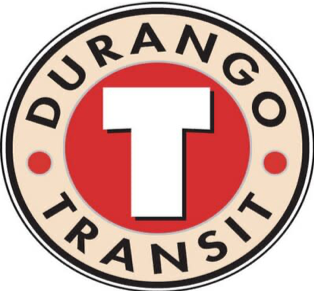
In 2017, the City of Durango (Durango Transit) was awarded a U.S. Department of Transportation (U.S. DOT) Intelligent Transportation System (ITS) grant to install new technology in transit buses, including mobile ticketing options automated stop announcements, and automatic passenger counters. In 2019, Durango Transit issued an RFP which was awarded to Ride Systems, which offers an app with live bus location and other bus route information. As part of that RFP, Ride Systems indicated that the company would develop a mobile fare payment technology as part of the overall solution. However, due to challenges in development and deployment, the fare payment technology under Ride Systems was never fully developed. Ride Systems subcontracted the fare payment component to Token Transit who now provides mobile ticketing solutions to Durango Transit.
- Fare Technology & Vendor: Mobile ticketing and account-based ticketing; Token Transit.
- Motivations to Switch to Fare Technology: As part of the original grant request, Durango Transit wanted to integrate more technology that was cost-effective for the agency but competitively convenient with other transportation network companies. Overall, Durango Transit wanted to improve the ease-of-use and service reliability for riders.
- Timing of Implementation: Durango Transit had a previously established contract with Ride Systems enabling them to quickly pivot to working with Token Transit. The agency was able to implement the mobile technology in just a few weeks. Mobile ticketing through Token Transit was launched in January 2021.
- Rural, Small Urban, and Tribal Considerations: Durango Transit wanted to find a fare solution that was easy to implement for a small rural agency, required little to no upfront capital costs, and had back-end support from the vendor as needed. The transit agency encourages other agencies to identify potential barriers to moving to a fare technology and align it with their agency goals.
| Technology | Element Available | Notes |
| Branding | No | Riders download the Token Transit application in the app store. Once the app is launched, riders can scroll through the list of participating agencies and select Durango Transit. Once selected, the fares and app design scheme are branded to match the Durango Transit logo. |
| Open Payment | No | This feature is not available. |
| Account-Based System (ABT) | Yes | Each rider has access to their own profile in which to purchase mobile tickets and passes. |
| Fare Capping | Yes | The mobile application allows riders to take advantage of fare capping by default. |
| Purchasing Passes | Yes | Passes include a one-day pass, weekly pass, monthly pass, and annual pass and mirror the fare structure by Durango Transit |
| Multiple Tickets | Yes | The mobile application allows riders to select more than one ticket type for purchase and activation. When activated, the ticket displays the need for ID required if purchasing less than a full fare ticket. |
| Retail Partnerships | No | Durango Transit does not utilize retail partnerships to allow passengers to load cash funds onto the mobile app. |
| Trip Planning | No | Durango Transit utilizes a separate mobile application for trip planning. |
| Cloud Based | Yes | The application allows for cloud-based management and functionality |
| Smart Card Integration | No | This feature is not available. |
| Transit Rewards | No | This feature is not available. |
| Customer Service for Fare Technology | No | Durango Transit utilizes its existing transit customer service center to provide support features. |
Lancaster-Fairfield Public Transit
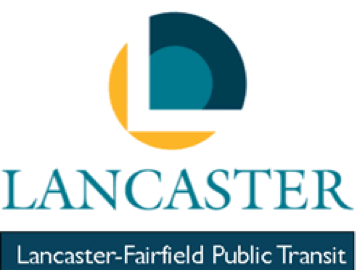
The Ohio Department of Transportation (ODOT) and Federal Transit Administration (FTA) provided grant funding to support a regional fare technology project called EZfare. Based in Ohio, NEORide is a non-profit organization that encourages cooperative agreements and coordination among members. In the mid-2010s, transit agency leaders in Ohio began to discuss the potential for riders to pay fares through a smartphone application. Many state agencies are small and have limited capacity to manage a complex mobile ticketing RFP. NEORide issued the RFP for a joint mobile ticketing solution, with 11 vendors providing responses. The final award was to Masabi to develop EZfare. Through Masabi, EZfare is an app that ensures cash-paying riders across Ohio, Kentucky, and Michigan can access touch-free services. The EZfare app allows riders to pay for trips with their credit or debit card or use open payment like Apple Pay. Additionally, riders can add funds to their EZfare Account by loading cash at partner retail locations and taking advantage of other trip-planning features through the EZ-fare enabled applications, including Transit, Uber, and Moovit.
- Fare Technology & Vendor: Mobile ticketing; Masabi.
- Motivations to Switch to Fare Technology: Leverage a joint procurement through NEORide to manage a complex mobile ticketing RFP, negotiate with vendors, and establish a stronger financial arrangement. The ultimate goal was to provide an easier payment process to riders, reduce bus dwell time, and pave the way for integrated payments across various transit systems.
- Timing of Implementation: In 2018, NEORide issued an RFP for a joint mobile ticketing solution for four agencies in Ohio which was awarded to Masabi. In 2019, nine additional NEORide agencies joined the platform expanding from four initial agencies to 13. In 2020, 12 of the 13 EZfare systems transitioned from visual validation to readers and installed onboard validators. This allows passengers to scan a barcode on their mobile phone to pay for their fare. In January 2021, Lancaster Transit also joined the EZfare consortium in addition to two other agencies. Now, there are 14 transit agencies of the 18 NEORide members using EZfare technology. In 2022, EZfare users, including users of Lancaster Transit, will be able to take advantage of EZfare smart cards and fare capping.
- Rural, Small Urban, and Tribal Considerations: NEORide and Lancaster advise other agencies to take time to learn about the products vendors offer, collaborate where feasible with transit agency partners, and express your transit agency needs with vendors. NEORide has made multiple amendments to the RFP, including adding Uber, Moovit, and Transit App, other retail partners, and negotiating rates with the addition of new members.
| Technology | Element Available | Notes |
| Branding | Yes | |
| Open Payment | Yes | |
| Account-Based System (ABT) | Yes | |
| Fare Capping | No | |
| Purchasing Passes | Yes | |
| Multiple Tickets | Yes | |
| Retail Partnerships | Yes | |
| Trip Planning | No | |
| Cloud-Based | Yes | |
| Smart Card Integration | No | |
| Transit Rewards | No | |
| Customer Service for Fare Technology | No |
Monterey-Salinas Transit & The California Integrated Mobility Project
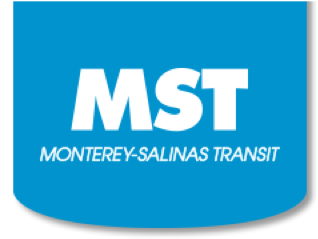
The California Integrated Travel Project (Cal-ITP) was established to help California deliver on statewide goals of increasing transit ridership, and lowering transportation-related costs for public transit agencies and the traveling public. The Cal-ITP partnership consists of the California State Transportation Agency (CalSTA), the California Department of Transportation (Caltrans), and intercity and local transit partners. In the fall of 2019, Cal-ITP organized a market-sounding event with companies and organizations in the payments and trip planning industry to identify barriers to achieving Cal-ITP’s objectives and gauge the feasibility of proposed solutions.
As part of Cal-ITP, Monterey-Salinas Transit (MST) was the first agency in the state to test and offer a contactless payment option. The goal is that anyone holding a contactless bank card or payment-enabled device could conceivably purchase transit wherever they are located. MST partnered with CyberSource, a Visa solution; Little pay, a transit-focused payments platform; and SC Soft, a transit ticketing and Automated Fare Collection specialist. In May 2020, MST maintenance teams installed trial validators, and passengers began using their contactless cards or payment-enabled devices. As the project’s demonstration partner, MST will assess usage and suggest potential improvements as organizers determine how to best scale the program. Caltrans selected MST for the Cal-ITP demonstration because of the agency’s sizable service area, a wide passenger base, and willingness to embrace innovation.
- Fare Technology & Vendor: Contactless EMV cards, contactless-enabled cash cards, and open payment devices; Visa and Mastercard.
- Timing of Implementation: CAL-ITP partners conducted a feasibility study and market sounding exercises from October 2019 to August 2020. In May 2020, Caltrans reached out to MST to see if the agency would be interested in joining a demonstration project for contactless payments. MST was able to secure Visa as a partner, and in May 2021, MST deployed their open contactless fare payment technology as part of a six-month demonstration through October 2021. Due to the success of the demonstration, Caltrans and VISA agreed to extend the demonstration project from October 2021 to the end of MST’s fiscal year in June 2022. In June, MST committed to the new fare technology and contactless fares are still a payment option 3 years later.
- Rural, Small Urban, and Tribal Considerations: Contactless payment methods can be an easy way to add technology to a transit system. MST has seen the benefits of the contactless payment system for all of its transit riders. As part of the California Integrated Travel Project, out-of-state partners may have additional opportunities to join and explore their own technology integration.
For more information about Cal-ITP work on contactless payments, see their Mobility Marketplace website.
| Technology | Element Available | Notes |
| Branding | No | This feature is unavailable with open payment. |
| Open Payment | Yes | Contactless cards or payment-enabled devices including Apple Pay, Google Pay, Samsung Pay, and Fitbit Pay; or contactless-enabled cash card. |
| Account-Based Ticketing (ABT) | No | This feature is unavailable. |
| Fare Capping | Yes | Enabled through the tap on and tap off of the same contactless card. |
| Purchasing Passes | Yes | Enabled through the contactless card. |
| Multiple Tickets | Yes | Requires separate devices for multiple tickets. |
| Retail Partnerships | Yes | Eligible through pass outlets. |
| Trip Planning | No | This feature is unavailable with open payment. |
| Cloud-Based | No | This feature is unavailable. |
| Smart Card Integration | Yes | MST’s GoCard is a stored value card and uses the same validator. |
| Transit Rewards | No | This feature is unavailable. |
| Customer Service for Fare Technology | No | MST customers can contact MST Customer service for any fare disputes or charge issues related to contactless-EMV fare payment. |
Rural Community Transportation
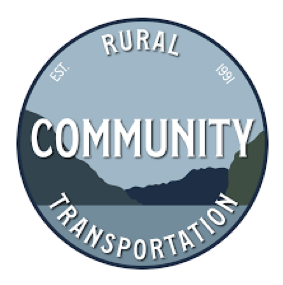
Over ten years ago, Rural Community Transit (RCT) converted from collecting cash fares to a fare-free system for its fixed route and deviated fixed route service. As a result of operating fare-free, a summary of fare technology is unavailable. RCT serves the largest geographic area in the state of Vermont, and many of the transit riders are low-income. Due to the administrative burden of counting cash and the financial burden on riders in the service area, RCT elected to convert to a fare-free system. VTRANS, the Vermont Department of Transportation, provides pass-thru state and federal funding to support RCT financially. Additionally, VTRANS provides technical assistance to RCT as needed. The local towns in the RCT service area also provide financial support through annual appropriations.
- Fare Technology & Vendor: Fare-free Policy; No Vendor.
- Motivations to go Fare-free: The decision to go fare-free was driven by the desire to reduce processing time to count cash fares and to better serve residents in a large rural service area.
- Timing of Implementation: RCT was able to go fare-free over ten years ago quickly because previously, the fare was only a quarter and the fare revenue was less than 2% of the total budget.
- Rural, Small Urban, and Tribal Considerations: A transit agency may be considering going fare-free, especially in the wake of the COVID-19 pandemic. However, RCT and VTRANS advise other agencies considering this approach to consider ridership, route performance, and the funding collected from fares. Depending on the evaluation of each of these factors, going fare-free may or may not be appropriate for a rural agency.
Western Maine Transportation Services

Western Maine Transportation Service (WMTS) offers fixed route, commuter service, flex-route, demand response service, contract service, complementary Americans with Disabilities (ADA) paratransit service to Citylink bus. However, the technology is not available for contracted or demand response services, only fixed route.
- Fare Technology & Vendor: Smart card and open payment; Financial Institution.
- Motivations to Switch to Fare Technology: WMTS frequently received requests from transit customers to be able to have technology that enabled them to use their debit or credit card to pay for fares. Additionally, it supports WMTS operations because it requires less time and effort for staff to count farebox revenue.
- Timing of Implementation: Launched in October 2018; required approximately one month for implementation. However, the agency had done some pre-planning work.
- Rural, Small Urban, and Tribal Considerations: WMTS had the infrastructure in place to allow for a quick deployment, including WiFi and other necessary infrastructure. Additionally, they have a consultant who can provide maintenance support, enabling WMTS staff to maintain equipment internally. The technology has not had a cost-benefit to the agency, but the benefit to the transit rider outweighs the costs. The roll-out required a day of internal training for staff and operators on using the technology. WMTS advises other agencies to “do their homework” – to understand the costs and what they are trying to do, specifically overall goals. Technology does not necessarily save the agency money, but it does make the customer experience better. Make sure technology helps the agency reach overall goals. For WMTS, it accomplished their goal – to not have to use cash to pay for fares.
| Technology | Element Available | Notes |
| Branding | N/A | This feature is unavailable. |
| Open Payment | Yes | Each vehicle is its own financial institution; equipment is leased from the bank and their associated vendor; Accepts Credit/Debit and Google/Apple Pay. |
| Account-Based Ticketing (ABT) | No | This feature is unavailable. |
| Fare Capping | No | This feature is unavailable. |
| Purchasing Passes | Yes | Yes, riders can purchase multiple passes with the smart card, however not applicable with open payment. |
| Multiple Tickets | Yes | A rider can purchase multiple tickets at a time. |
| Retail Partnerships | Yes | With a financial institution. |
| Trip Planning | No | This feature is unavailable. |
| Cloud Based | No | This feature is unavailable. |
| Smart Card Integration | Yes | WMTS uses physical smart cards. |
| Transit Rewards | Yes | A rider receives an additional value of 10 percent of the purchase transaction when reloading the smart card. |
| Customer Service for Fare Technology | No | WMTS provides its own agency customer services. Bus drivers contact dispatch, who contacts WMTS customer service to apply credit to a specific smart card and can deposit funds into the farebox. |
